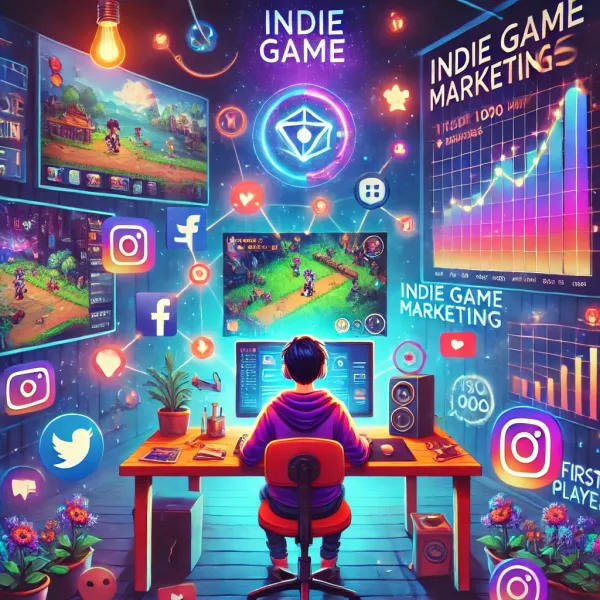Niche markets: How to define and reach your indie game’s ideal audience
Indie game developers are increasingly finding success by identifying and targeting niche markets. With the gaming landscape becoming more saturated, trying to appeal to everyone can result in your game getting lost in the noise. Focusing on a specific niche allows you to better meet your audience’s needs and build a loyal player base. In this article, we’ll explore how to define your game’s ideal niche and how to effectively reach them.
1. Why focusing on niche markets Is key to indie game success
In the current gaming market, aiming for broad appeal may dilute your game’s core strengths. Niche markets are more focused, allowing indie developers to craft experiences that deeply resonate with a specific audience. This approach not only increases engagement but also fosters loyalty and word-of-mouth promotion, crucial for indie games with smaller marketing budgets.
Finding your niche can increase your game’s longevity and help you connect with players who are more likely to spend time and money on your game. As explained by The Niche Guru, identifying your niche audience ensures that your game speaks directly to their needs and values, improving both engagement and sales(The Niche Guru).
2. How to identify your game's ideal audience
Before marketing your game, it's crucial to understand exactly who you’re building it for. This goes beyond traditional demographics like age or gender—successful niche marketing involves understanding the deeper motivations, habits, and preferences of your target players.
a. Audience research and segmentation
The first step in identifying your niche audience is thorough research. According to Solsten.io, your ideal audience isn't just about genre or age—it’s about understanding the emotional core of what your audience desires. For example, are they looking for competitive gameplay or a relaxing experience? Do they prefer social interactions or solo gaming? Knowing these details can help refine your marketing efforts and game design(Solsten).
b. Competitor analysis
Understanding your competition is a key component of niche marketing. By analyzing similar games and their audiences, you can identify gaps in the market or underserved communities that your game could target. GameMaker.io suggests exploring forums and social media platforms where your potential audience is active to better understand their preferences and behaviors(GameMaker).
3. Tailoring your game for niche markets
Once you have identified your target audience, the next step is to tailor your game to meet their specific needs. This includes both gameplay and aesthetic elements.
a. Gameplay mechanics that resonate
Your game’s mechanics should align with the desires of your niche audience. For instance, a game targeting fans of strategy should focus on deep, rewarding mechanics that require thoughtful planning, while a game aimed at casual players might prioritize accessibility and short play sessions.
b. Visuals and theme
The art style and theme of your game should also reflect your audience’s tastes. For example, a cyberpunk-themed game will naturally appeal to fans of futuristic, tech-heavy environments, while a minimalist or pixel-art style might attract players who appreciate retro aesthetics. (Wardrome).
4. Reaching your niche audience
With your game crafted to appeal to a specific niche, the next challenge is reaching that audience.
a. Leverage social media and community building
Social media platforms are invaluable for connecting with niche communities. Create content that resonates with your audience's interests, whether it’s development updates, behind-the-scenes content, or engaging conversations. As GameMaker.io points out, being active in relevant forums and social platforms can help build trust and engagement with your community.
b. Influencers and partnerships
Collaborating with influencers who share a connection with your niche can be a powerful tool for reaching new players. Partnering with smaller influencers who have dedicated followings in your game’s genre can lead to more authentic recommendations and higher conversion rates(The Indie).
5. Long-Term engagement with niche audiences
Building a relationship with your niche audience doesn’t stop after your game’s launch. Continuous engagement is essential to retaining your player base. Regular updates, expansions, or community events can keep your audience invested in the game over time. (Wardrome).
By focusing on a niche market, indie game developers can achieve greater success through targeted marketing and gameplay that resonates with a specific audience. This approach not only fosters loyalty and engagement but also maximizes marketing efforts. As the gaming landscape continues to evolve, indie developers who prioritize niche audiences will be well-positioned for long-term success.




